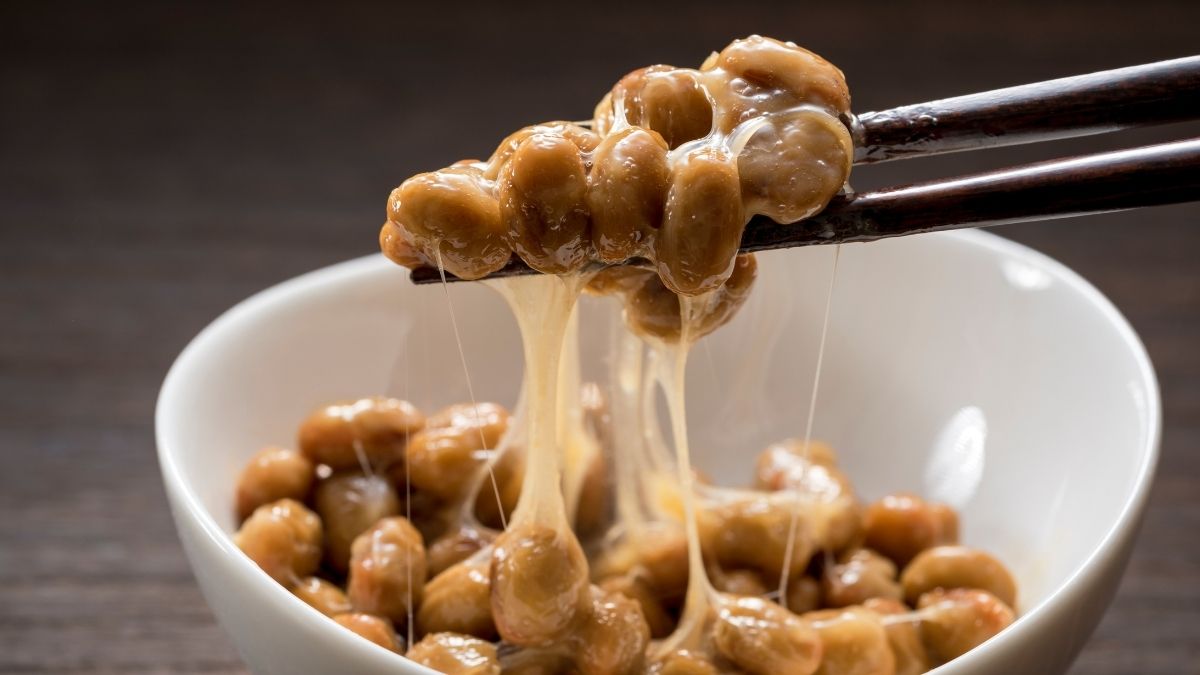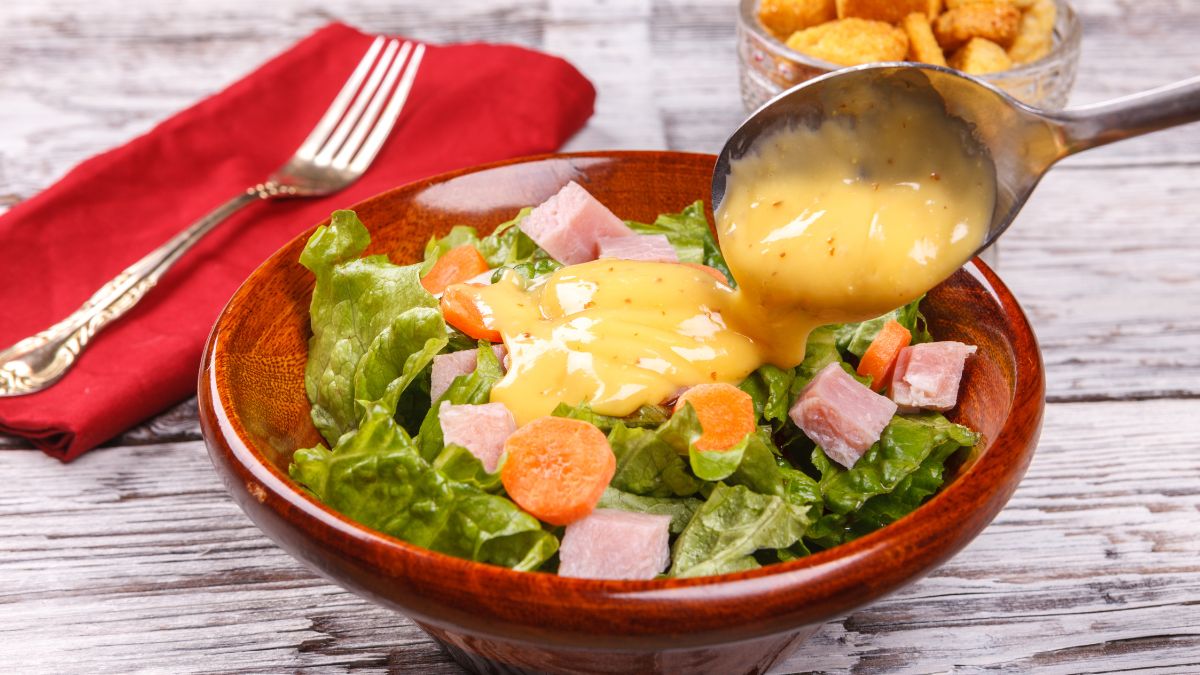Answer: It depends.

Natto is also known as fermented soybeans and is one of the traditional foods of Japan as it’s been around for centuries. Natto is known for its sticky texture and its richness in proteins and vitamin K2. Are you wondering if natto is vegan?
Table of Contents
Is Natto Vegan?
It depends on how you eat it. In Japan, natto is sold along with various sauces such as miso and tare that use fish extract. Therefore, you need to go through the ingredients on the natto box before buying it to make sure it’s vegan.
The additional sauces such as miso and tare, and gelatin in the fermentation process make natto a non-vegan food item. Apart from these additions, natto is entirely vegan, and you can easily make it at your home as well.
Read further as we go in-depth to answer the question if natto is vegan. We will talk about its nutritional value and how you can make vegan dishes with natto at your home.
How Natto Is Made: Ingredients Used and Process
Natto is fermented soybeans made up of two ingredients: soybeans and Bacillus Subtilis or Bacillus Natto, a type of bacteria used to ferment the soybeans.
In the earlier times, like the 1960s, the soybeans in natto were fermented with the help of rice straw as it contained Bacillus Natto. The steamed or half-cooked soybeans were wrapped within the rice straw bundles and left to ferment for weeks.
With time, the whole process of making natto became quicker with the invention of the commercial Bacillus Natto culture, a starch-like powder. Nowadays, companies soak soybeans, add the Bacillus Natto powder, cover it, and ferment it.
The long fermentation period of about one week allows natto to develop its slimy and stringy texture. However, to create the same consistency in less time, there are chances of cross-contamination in some Natto brands.
Cross-Contamination in Natto
Since the fermentation period of natto is quite long for commercial industries and use, some companies use a small amount of gelatin in the fermentation process. The gelatin is, most of the time, non-vegan and made up of animal fat.
Moreover, natto soybean sprouts are also prone to Listeria Monocytogenes contamination, which might cause illness by weakening your immune system.
Therefore, while buying natto, you should always check the ingredients listed on its packaging. Apart from purchasing natto from the store, you can make your own vegan natto at home as well.
Nutritional Value and Health Benefits of Natto
Being vegan can be slightly challenging to include various nutrients such as proteins and specific vitamins in your diet. In this case, natto is a savior as it’s one of the best protein sources.
Natto is an excellent source of plant-based proteins and vitamin K2. Moreover, natto has several health benefits as well because it has probiotic properties. The following are some of the health benefits of including natto in your diet.
Helps Digestion
One of the essential elements of natto is Bacillus Subtilis, a probiotic used in the fermentation process. The probiotic serves multiple purposes as it helps digestion by allowing the body to absorb the required nutrients present in the natto easily and quickly.
The presence of the probiotic makes natto much more nutritious as compared to other soy products.
Improves Bone Health
Calcium plays a vital role in strengthening your bones. However, the consumption of calcium would be helpful only when the body absorbs it. Therefore, you should include vitamin K1 and K2 in your diet so that your body can absorb the calcium in the food properly.
Natto is rich in vitamin K2, which is not easily found and, according to researchers, stays in the body for a longer period than vitamin K1. Vitamin K2 would allow your body to absorb the calcium from other food items and improve your bone health by strengthening them.
Prevents Blood Clots
The various nutrients such as Vitamin K1 and amino acid present in natto stop the formation of blood clots while reducing the existing ones and improving the blood circulation in the body.
Vitamin K1 also includes blood-thinning properties, and along with the various enzymes, natto also reduces chronic fatigue and the risk of fibromyalgia.
How to Make Vegan Natto at Home?
Although there are multiple brands in Japan from where you can buy Vegan Natto, you can make your vegan natto at home with the help of the following ingredients: soybeans, natto spore, and Nattomoto powder or Bacillus Natto powder.
Once you have gathered all the ingredients mentioned above, you need to steam the soybeans, add the remaining ingredients and let them ferment.
One of the easiest ways through which you can ferment soybeans at your home is by placing them in an oven with its temperature set between 98°F to 108°F for a couple of minutes. After that, take out the soybeans from the oven and let them refrigerate overnight.
You can refrigerate the natto for up to one week and store it for up to two months by freezing it so that you can enjoy your vegan natto any time. Now that you’re aware of the process involved in making natto and how you can make it on your own, let us look at the various vegan dishes you can make with natto.
Vegan Dishes You Can Make With Natto
You can enjoy the stringy texture along with the distinctive taste of natto by eating it alone. However, if you wish to incorporate natto or simply fermented soybeans with other food items to add more flavor to your meal, we have got you covered.
The following are some ways to use natto with other food items and create a delicious vegan dish at your home and eat it at any time of the day.
Natto on Toast
If you wish to have natto for breakfast and are looking for a food companion to go along with it, then you can try having it with toast. Natto with toast sounds too simple, but it’s a great way to start your day.
Since natto is primarily considered a breakfast food and so is toast, both of them go together really well. You can add vegan butter to your toast and pair it with vegan cheese as well.
Natto With Fried Rice
Natto with fried rice is a classic food combination in Japan. Let it be breakfast, lunch, or dinner; you can have natto with simple or fried rice at any point in the day by just combining the two of them in a bowl.
In addition to it, you can also add any vegan soup or sauce of your choice as well into the rice and Natto mix and try some new, exciting flavor profiles.
Natto With Tsukemono (Pickled Vegetables)
Natto goes exceptionally well with tsukemono or pickled vegetables as they are an essential part of the diet of Japanese people. You can pickle various vegetables such as cucumber, carrot, zucchini, and turnip together while covering it with miso paste for a couple of hours.
Rinse the miso paste off the vegetables and relish the pickled vegetables along with natto and a bowl of freshly cooked Japanese rice.
Natto With Vegan Miso Soup
Another classic way to eat natto is having it alongside vegan miso soup, as the miso paste is already vegan. You need to add a vegan stock in the miso paste to make it an utterly vegan soup.
There is a misconception among people that miso soup can’t be made vegan. However, instead of adding any meat stock (chicken stock or fish extract) into your miso paste, you can add kombu dashi, made up of kelp seaweed.
Natto Chocolate Bar
Natto with chocolate sounds different and will appeal to a few people, but the dish’s overall flavor and texture are much different from the dishes mentioned above. You can melt any plant-based or vegan chocolate on a double boiler and then mix natto into it.
After mixing, the consistency of the natto chocolate would be similar to mochi or pounded rice. Most of the time, the smell of chocolate will overpower natto’s smell, and you’d be left with its stringy, sticky texture.
You can eat natto chocolate in the warm state, or you can transfer it in a mold, freeze it, and enjoy it in the form of a chocolate bar.
Wrapping Up
Despite being only fermented soybeans, natto is a classic and traditional dish.
The classic dish is vegan with a slight fear of cross-contamination due to the fast-paced nature of the food industry. However, you can make your own natto at home with the help of natto bacteria powder.
You can enjoy the stringy texture of natto by eating it alone, or you can have it along with many vegan dishes. For example, natto with rice and pickled vegetables is one of the most delicious dishes you’ll encounter.
Moreover, you can try uncommon combinations such as natto with chocolate and explore the different flavor combinations to include in your vegan diet.




